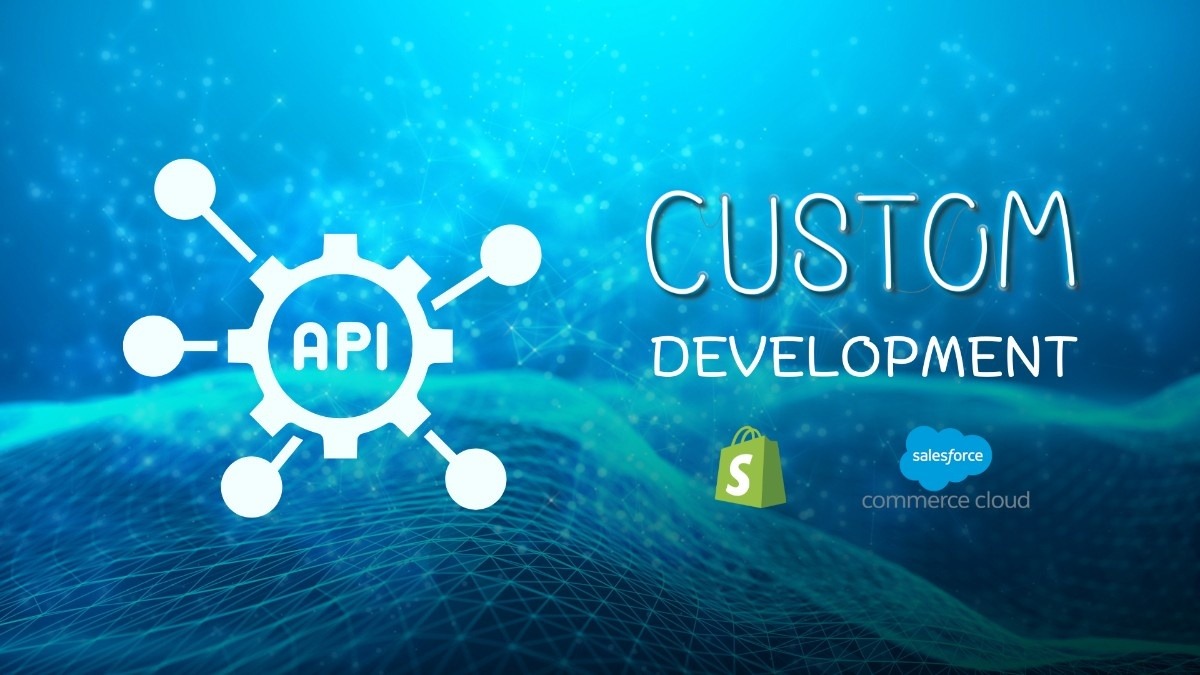n today’s fast-paced eCommerce landscape, flexibility and customization are key to staying competitive. Businesses are shifting towards API-first commerce, allowing them to tailor their platforms, integrate seamlessly with third-party applications, and innovate faster.
Shopify and SFCC are two major players in this space, each offering powerful APIs that empower developers to extend and customize their platforms. Shopify provides GraphQL and REST APIs, while SFCC enables deep customization through its Open Commerce APIs (OCAPI) and hooks.
This article explores how these platforms enable extensibility, the challenges involved, and the advantages they bring to enterprise eCommerce.
The Need for API-Driven Extensibility
Why APIs Matter in Modern Commerce 💡
Traditional, monolithic eCommerce platforms often struggle with rigidity, making it difficult for businesses to adapt to changing consumer expectations. The shift towards headless commerce, microservices architecture, and API-first development has revolutionized how businesses build and scale their online stores.
Challenges Without API-First Approaches ⚠️
- Limited Customization: Predefined workflows and rigid templates restrict innovation.
- Integration Complexity: Connecting with third-party services without robust APIs is cumbersome.
- Scalability Issues: Monolithic architectures can struggle to handle growing demands and traffic spikes.
- Performance Bottlenecks: Inflexible back-end systems can slow down performance.
Shopify’s API-First Approach
GraphQL & REST APIs
Shopify provides developers with two primary API types:
- GraphQL API: Efficient data fetching, reducing payload size and improving performance.
- REST API: A traditional approach for accessing and modifying Shopify resources.
Features 🧩
- Webhooks & Event-Driven Architecture: Enables real-time updates and automation.
- App Extensions: Allows third-party developers to create custom features via Shopify’s App Store.
- API Rate Limits: Shopify enforces rate limits to maintain platform stability, with GraphQL offering more efficient data requests.
- Headless Commerce Support: Developers can use APIs to build fully customized front-end experiences.
SFCC and Open Commerce APIs (OCAPI)
Extensibility Through OCAPI & Hooks
SFCC offers Open Commerce APIs (OCAPI) and a hook-based customization model, giving developers deeper control over the platform’s behavior.
Features 🧩
- OCAPI for Data & Services: Provides access to customer, product, and order data for seamless integrations.
- Custom Hooks & Pipelines: Allow developers to override or extend default behaviors.
- Cartridges for Custom Development: Extend SFCC’s capabilities by adding custom-built cartridges.
- Integration with CRM & Marketing Tools: Natively connects with Salesforce ecosystem products like Service Cloud and Marketing Cloud.
Comparing Shopify & SFCC Extensibility
| Feature | Shopify | SFCC |
|---|---|---|
| API Type | REST, GraphQL | OCAPI |
| Customization | App Extensions, Webhooks | Custom Hooks, Cartridges |
| Scalability | Best for SMBs & Mid-Market | Enterprise-Grade |
| Integration Complexity | Lower | Higher |
| Rate Limits | Yes | No Hard Limits |
Common Misconceptions 🤔
“APIs Make Everything Easy”
While APIs provide flexibility, improper implementation can lead to performance bottlenecks. Choosing the right API strategy is crucial.
“GraphQL is Always Better Than REST”
While GraphQL is efficient for complex queries, REST APIs are sometimes simpler and easier to cache, making them useful for certain use cases.
The Future of API-Driven Commerce
- Composable Commerce: API-driven architectures will become the default, allowing businesses to mix and match best-of-breed solutions.
- AI & Automation: APIs will integrate more with AI-driven analytics and automation.
- Stronger Security & Compliance: As APIs handle more sensitive data, security protocols will continue to evolve.
Staying ahead in eCommerce development means mastering API-first approaches. Platforms like Shopify and SFCC will continue evolving, providing even greater flexibility and power to developers and architects.
Wrapping Up: Key Insights 📌
APIs are the foundation of modern commerce, enabling businesses to scale, customize, and innovate. Shopify’s GraphQL and REST APIs, combined with its app ecosystem, provide a highly flexible yet user-friendly environment. Meanwhile, SFCC’s OCAPI and hook-based extensibility offer deep customization for enterprise solutions.
For developers and architects, understanding these extensibility options is crucial in choosing the right platform for business needs. Whether building for SMBs or large enterprises, API-first commerce is the future.
Are you looking to extend your Shopify or SFCC store?
Our experts are here to help — reach out for a personalized consultation and let’s make it happen! 🙌



